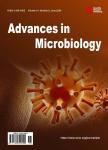A Qualitative Investigation of Volatile Organic Components of Antimicrobial Oil Smoke Vapors
A Qualitative Investigation of Volatile Organic Components of Antimicrobial Oil Smoke Vapors作者机构:Department of Biology Missouri University of Science and Technology Rolla USA School of Medicine Texas Tech University Health Sciences Center Lubbock USA Department of Chemistry Missouri University of Science and Technology Rolla USA
出 版 物:《Advances in Microbiology》 (微生物学(英文))
年 卷 期:2023年第13卷第1期
页 面:76-87页
学科分类:081704[工学-应用化学] 07[理学] 08[工学] 0817[工学-化学工程与技术] 070303[理学-有机化学] 0703[理学-化学]
主 题:Antimicrobials Disinfectants Vapors Fog Oil Methyl Soyate Bacteria
摘 要:A petroleum middle distillate, known as fog oil (FO), has been used in the United military battlefield to create obscurant smoke screens. During studies on the feasibility of replacing FO with relatively environmentally benign natural oil esters, with similar flow properties, such as methyl soyate (MS), it was observed that FO and MS aerosols and vapors were lethal to Salmonella typhimurium strains (Ames strains used to test for mutagenic activity in the Modified Ames Assay) even after very short exposures. It was further shown that vapors produced from the vegetable oil esters under certain conditions exhibited antimicrobial activity against a wide range of Gram-positive and Gram-negative bacteria. In this study, we examined the antimicrobial properties of volatile organic compounds detected in vegetable oil ester vapors. The experiments involved introduction of a known amount of specific compounds present in oil smoke vaors, individually and in combination, into an exposure chamber containing nutrient agar petri dishes inoculated with Salmonella typhimurium. Petri dishes were removed from the chamber after varied exposure periods to determine survival of the bacteria. The results of the experiments showed that individual compounds exhibited antimicrobial activity but lower than the vapors produced during thermal aerosol generation process suggesting the antimicrobial activity of the vapors is likely a synergistic activity of multiple components of the vapors.



